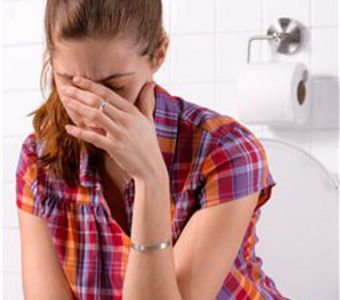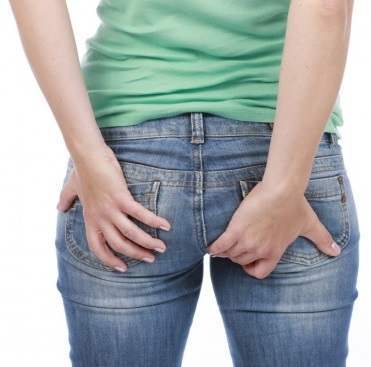Hemorrhoid Symptoms: Main Characteristics
Hemorrhoids, also known as hemorids, are the medical condition where the normal blood vessels in the rectum become spongy and blood-filled. This occurs inside the walls of the rectum. At this point, the blood vessels become sensitive, inflamed, and even bleed. There is no one description of hemorrhoids, nor is there “one size fits all” for the diagnosis. Each patient has his or her own experience with the problem. Symptoms of hemorrhoids vary from case to case and can also differ depending on the type of hemorrhoids and their severity.
There are two main types of hemorrhoids: internal and external. Not all cases that look like hemorrhoids are actually hemorrhoids. Some conditions, like anal fissures, appear with similar symptoms. Anal fissures, like hemorrhoids, also appear with abscesses, itching, sensitivity, and burning in the rectal area.
Below are the symptoms of hemorrhoids. Make sure that the symptoms you have are in fact hemorrhoids and not another condition that could be more serious.
Pain
 Patients who suffer from hemorrhoids typically report the most obvious side effect is pain. Hemorrhoid sufferers experience pain around the rectal walls when they change positions. Different positions known to cause varying degrees of pain are sitting, standing, and walking.
Patients who suffer from hemorrhoids typically report the most obvious side effect is pain. Hemorrhoid sufferers experience pain around the rectal walls when they change positions. Different positions known to cause varying degrees of pain are sitting, standing, and walking.
Patients also note that the dryer their bowel movements are, the more pain they experience. Check for different hemorrhoid relief options to help remedy the pain and treat the other symptoms surrounding the condition.
Discomfort
A common hemorrhoid symptom is discomfort. Generally, you will experience some level of discomfort in the anal region. The discomfort may be persistent or intermittent. The discomfort usually worsens during excretion.
Swelling
Another common symptom is swelling in the rectal veins. This comes from increased friction, pressure, and straining during excretion. Other reasons for swelling are lifting heavy weights or loads and being overweight, pregnant, or aging. Using hemorrhoid creams can help reduce swelling.
Itchiness, Burning, Inflammation
Almost all cases of hemorrhoids, particularly internal hemorrhoids, report burning and itching around the anus. Many times, the inflammation has symptoms similar to diaper rash.
Smelly Stools
All bowel movements have a foul smell. However, bowel movements for those with hemorrhoids with bleeding can be extremely foul smelling.
Loosened Hemorrhoidal Tissues
Hemorrhoid symptoms can advance dramatically and are present in varying degrees.
You may experience internal hemorrhoids that, over time, find their way out of the body after you pass a stool. This type of hemorrhoid is considered a prolapsed hemorrhoid and is caused by increased stress and pressure in the area.
Bleeding Hemorrhoids
Bleeding can occur if the hemorrhoidal tissue is swollen, especially if you are trying to pass a stool. If you have hemorrhoids, look for bright red blood, indicating that the blood is fresh. If dark red, brown, or black blood is present, it is most likely a different medical condition, and you should see your doctor right away. A bleeding hemorrhoid always has bright red blood.
Appearance And Texture Of Hemorrhoids
Pay attention to your hemorrhoid symptoms and the way that they feel. Internal hemorrhoids are much harder to monitor, but you will recognize when your symptoms change if you listen to your body.
External hemorrhoids may alarm or frighten you at first. External hemorrhoids are typically found during bathing or wiping the rectal area. These hemorrhoids feel like a small lump around the anus. Prolapsed hemorrhoids feel more like a bunch of grapes and protrude away from the anal opening.
Prolapsed hemorrhoids develop inside the rectum and over time begin to sag and make their way through the anus. Typically, this happens during defecation. Thrombosed hemorrhoids are usually larger in size and can vary from red to blue to purple.
By knowing your body and looking for subtle changes you can know if your treatment is working.

 Subscribe Now
Subscribe Now

 There are a few popular methods to treat hemorrhoids with over-the-counter options. And how do these remedies reduce the severity of hemorrhoids? By shrinking tissues.
There are a few popular methods to treat hemorrhoids with over-the-counter options. And how do these remedies reduce the severity of hemorrhoids? By shrinking tissues. For severe cases of hemorrhoids, you may need to consider medical intervention. Before considering a medical procedure, take a look at the following alternatives and talk to the doctor about your options.
For severe cases of hemorrhoids, you may need to consider medical intervention. Before considering a medical procedure, take a look at the following alternatives and talk to the doctor about your options. Rubber band ligation is one of the most recommended hemorrhoidal remedies in the medical profession. This is because it reduces the recurrence of hemorrhoids.
Rubber band ligation is one of the most recommended hemorrhoidal remedies in the medical profession. This is because it reduces the recurrence of hemorrhoids.



 Fiber in the Diet
Fiber in the Diet